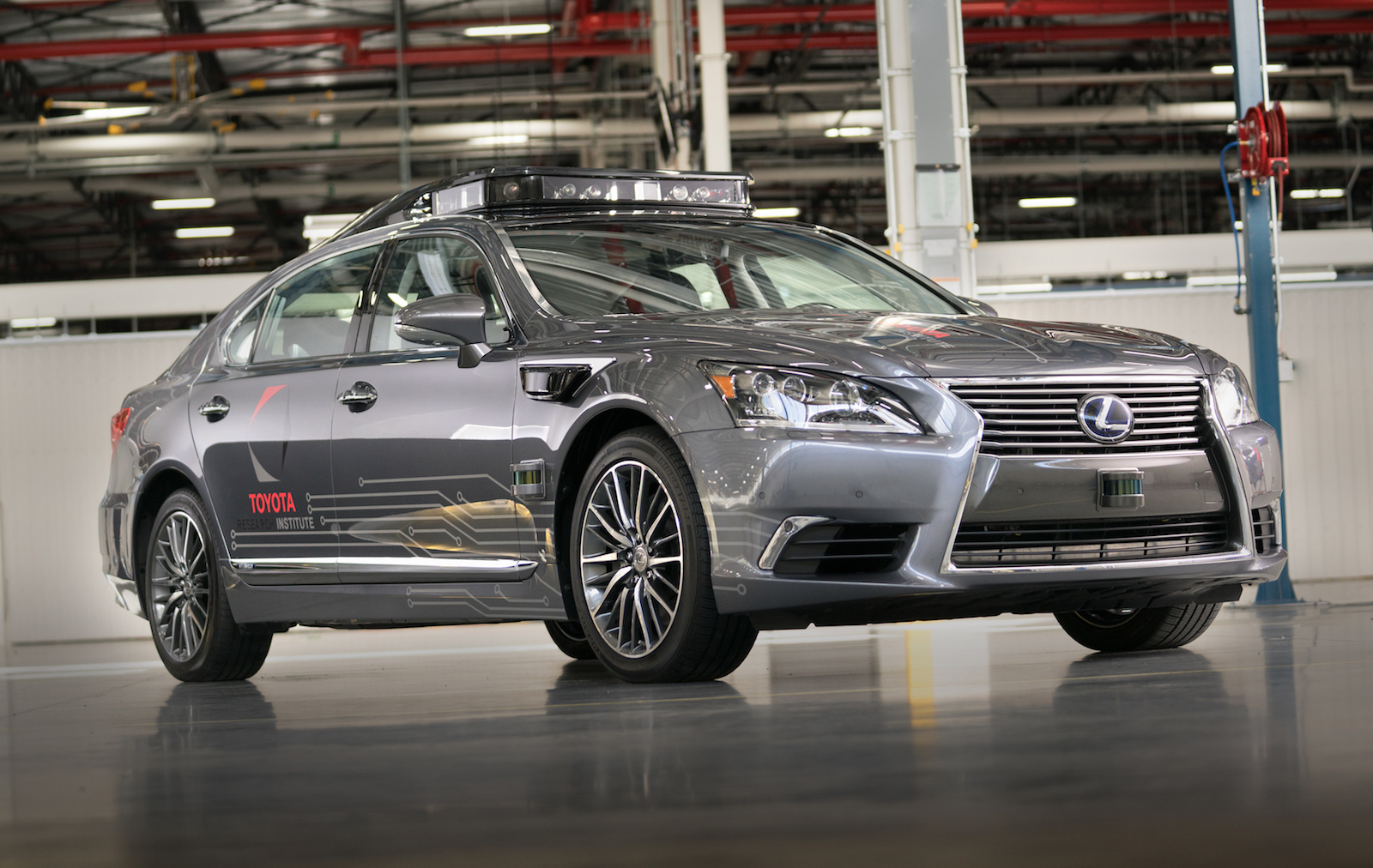Toyota Research Institute (TRI) will debut the latest version of its automated driving research vehicle at CES next week. TRI had three major goals with this latest model and Platform 3.0 incorporates them all into a car with more perception capabilities, a design that’s easier to produce at scale and a much sleeker look. “To elevate our test platform to a new level, we tapped Toyota’s design and engineering expertise to create an all-new test platform that has the potential to be a benchmark in function and style,” TRI CEO Gill Pratt said in a statement.
First, the vehicle now has 360-degree LiDAR sensing — previous platforms only had forward-facing LiDAR sensing capabilities — and new shorter-range LiDAR sensors placed lower to the ground allow for detection of smaller objects like road debris or children.
Secondly, Platform 3.0, built on a Lexus LS 600hL, will go into low-volume production this spring and will come in two versions. One will feature a dual cockpit design, allowing for TRI to experiment with methods that transfer driving control between humans and the automated system. It can also accommodate a backup safety driver. A second model will incorporate a single cockpit and will test TRI’s full automation technology. TRI says the production is intentionally low because the team keeps updating the technology so quickly. It just came out with Platform 2.0 in March and Platform 2.1 in September.
Finally, in partnership with CALTY Design Research, Toyota engineers worked to incorporate a lot of the automated technology hardware into the car itself, minimizing what has to protrude from the top of the car and what has to be stored in the trunk. Now, the rooftop sensors and cameras sit closer to the car itself and are covered by a panel that tapers sleekly toward the rear of the vehicle. And the trunk is no longer taken up entirely by the computational hardware but instead houses a small box that contains the necessary equipment.
You can check out Platform 3.0 in the video above and be sure to follow along with our CES coverage next week.
Click here to catch up on the latest news from CES 2018.
(16)

